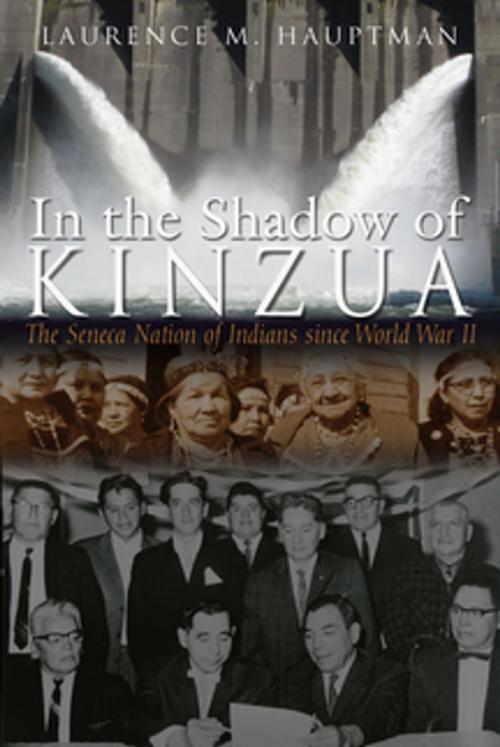In the Shadow of Kinzua
The Seneca Nation of Indians since World War II
Nonfiction, History, Americas, United States, State & Local, Native American| Author: | Laurence M. Hauptman | ISBN: | 9780815652380 |
| Publisher: | Syracuse University Press | Publication: | January 22, 2014 |
| Imprint: | Syracuse University Press | Language: | English |
| Author: | Laurence M. Hauptman |
| ISBN: | 9780815652380 |
| Publisher: | Syracuse University Press |
| Publication: | January 22, 2014 |
| Imprint: | Syracuse University Press |
| Language: | English |
2014 Award of Merit winner from the American Association for State and Local History
The Kinzua Dam has cast a long shadow on Seneca life since World War II. The project, formally dedicated in 1966, broke the Treaty of Canandaigua of 1794, flooded approximately 10,000 acres of Seneca lands in New York and Pennsylvania, and forced the relocation of hundreds of tribal members. Hauptman offers both a policy study, detailing how and why Washington, Harrisburg, and Albany came up with the idea to build the dam, and a community study of the Seneca Nation in the postwar era. Although the dam was presented to the Senecas as a flood control project, Hauptman persuasively argues that the primary reasons were the push for private hydroelectric development in Pennsylvania and state transportation and park development in New York.
This important investigation, based on forty years of archival research as well as on numerous interviews with Senecas, shows that these historically resilient Native peoples adapted in the face of this disaster. Unlike previous studies, In the Shadow of Kinzua highlights the federated nature of Seneca Nation government, one held together in spite of great diversity of opinions and intense politics. In the Kinzua crisis and its aftermath, several Senecas stood out for their heroism and devotion to rebuilding their nation for tribal survival. They left legacies in many areas, including two community centers, a modern health delivery system, two libraries, and a museum. Money allocated in a "compensation bill" passed by Congress in 1964 produced a generation of college-educated Senecas, some of whom now work in tribal government, making major contributions to the Nation’s present and future. Facing impossible odds and hidden forces, they motivated a cadre of volunteers to help rebuild devastated lands. Although their strategies did not stop the dam’s construction, they laid the groundwork for a tribal governing structure and for managing other issues that followed from the 1980s to the present, including land claims litigation and casinos.
2014 Award of Merit winner from the American Association for State and Local History
The Kinzua Dam has cast a long shadow on Seneca life since World War II. The project, formally dedicated in 1966, broke the Treaty of Canandaigua of 1794, flooded approximately 10,000 acres of Seneca lands in New York and Pennsylvania, and forced the relocation of hundreds of tribal members. Hauptman offers both a policy study, detailing how and why Washington, Harrisburg, and Albany came up with the idea to build the dam, and a community study of the Seneca Nation in the postwar era. Although the dam was presented to the Senecas as a flood control project, Hauptman persuasively argues that the primary reasons were the push for private hydroelectric development in Pennsylvania and state transportation and park development in New York.
This important investigation, based on forty years of archival research as well as on numerous interviews with Senecas, shows that these historically resilient Native peoples adapted in the face of this disaster. Unlike previous studies, In the Shadow of Kinzua highlights the federated nature of Seneca Nation government, one held together in spite of great diversity of opinions and intense politics. In the Kinzua crisis and its aftermath, several Senecas stood out for their heroism and devotion to rebuilding their nation for tribal survival. They left legacies in many areas, including two community centers, a modern health delivery system, two libraries, and a museum. Money allocated in a "compensation bill" passed by Congress in 1964 produced a generation of college-educated Senecas, some of whom now work in tribal government, making major contributions to the Nation’s present and future. Facing impossible odds and hidden forces, they motivated a cadre of volunteers to help rebuild devastated lands. Although their strategies did not stop the dam’s construction, they laid the groundwork for a tribal governing structure and for managing other issues that followed from the 1980s to the present, including land claims litigation and casinos.















